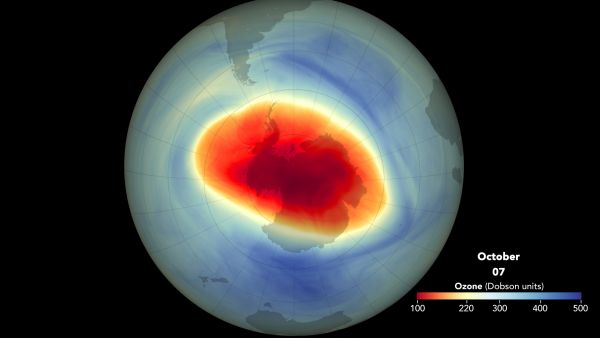When you purchase through links on our internet site , we may clear an affiliate commission . Here ’s how it works .
A slight aerate slash of promised land survives deep in an icy Antarctic lake , providing a window into what life on Earth may have been like before oxygen permeated the atmosphere .
Earth ’s atmosphere was relatively oxygen - free until about 2.4 billion twelvemonth ago , when photosynthetic bacteria begin pumping out oxygen as a waste mathematical product in the process of metamorphose sunshine into energy . This " Great Oxidation Event " reflects the tip at which oxygen became far-flung , but research worker now think photosynthetic bacterium evolvedat least half a billion age sooner . However , the details of the transition from a low- to mellow - oxygen environs remain orphic .

A view of Lake Fryxell in the McMurdo Dry Valleys of Antarctica, where the surface ice never melts. New research finds that oxygen-generating bacteria live in the depths of these lakes, where the waters are mostly oxygen-free.
One opening is thatoxygenwas locally big in some office by 2.8 billion years ago — millions of years before it went global . If so , these O pockets probably looked like the newly notice O hotspot in Antarctica .
" The thought is that the lake and rivers were anoxic [ oxygen - free ] , but there was Light Within available , and picayune bits of oxygen could roll up , " field of study researcher Dawn Sumner , an earth scientist at the University of California , Davis , said in a statement .
O surprise

William Graham Sumner and her colleagues discovered the O haven " a little by accident , " she said . The team was diving in Lake Fryxell , a 2.8 - mi - long ( 4.5 kilometers ) frozen - over lake in the McMurdo Dry Valleys of Antarctica . Like other lake in the neighborhood , Lake Fryxell has oxygenated layers up top , but becomes anoxic deeper down . [ See Photos of a Subglacial Lake in Antarctica ]
Unlike other lakes in the region , its anoxic layers start at depths where sunshine still penetrates . ( Typically , in sunstruck layers , photosynthesizing organisms spit out oxygen as part of their breathing . )
Ian Hawes , a researcher at the University of Canterbury in New Zealand , was diving with UC Davis graduate student Tyler Mackey , when the pair point out green lusterlessness of cyanobacteria , a type of bacteria that use photosynthesis to survive . They found that the bacteria were generating a layer of atomic number 8 0.08 inches ( 2 millimeters ) duncical in the otherwise oxygen - free water .

An ancient analogue
The Antarctic lake could thus provide a " natural laboratory " for analyze the signatures of local O pockets , the researchers reported Aug. 21 in the daybook Geology . Geoscientists could then look for those same theme song in ancient rocks , perhaps those go steady to before the oxidation case .
For now , the researchers contrive to canvass how these local oxygen oasis affect the anoxic water around them , as well as the sediments in the lake .
















